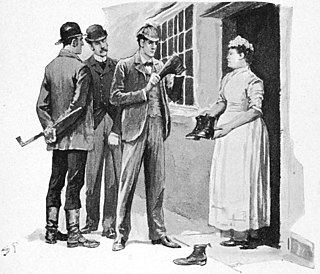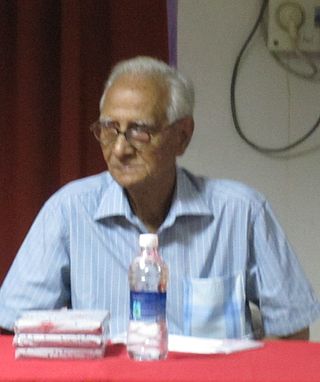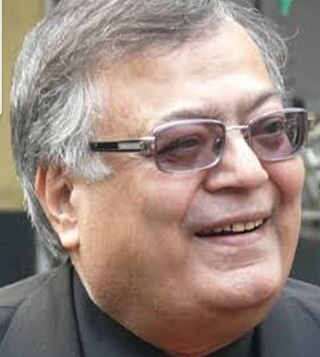Related Research Articles

Detective fiction is a subgenre of crime fiction and mystery fiction in which an investigator or a detective—whether professional, amateur or retired—investigates a crime, often murder. The detective genre began around the same time as speculative fiction and other genre fiction in the mid-nineteenth century and has remained extremely popular, particularly in novels. Some of the most famous heroes of detective fiction include C. Auguste Dupin, Sherlock Holmes, Kogoro Akechi, and Hercule Poirot. Juvenile stories featuring The Hardy Boys, Nancy Drew, and The Boxcar Children have also remained in print for several decades.
Pulp magazines were inexpensive fiction magazines that were published from 1896 until around 1955. The term "pulp" derives from the wood pulp paper on which the magazines were printed, due to their cheap nature. In contrast, magazines printed on higher-quality paper were called "glossies" or "slicks". The typical pulp magazine had 128 pages; it was 7 inches (18 cm) wide by 10 inches (25 cm) high, and 0.5 inches (1.3 cm) thick, with ragged, untrimmed edges. Pulps were the successors to the penny dreadfuls, dime novels, and short-fiction magazines of the 19th century.

Mystery is a fiction genre where the nature of an event, usually a murder or other crime, remains mysterious until the end of the story. Often within a closed circle of suspects, each suspect is usually provided with a credible motive and a reasonable opportunity for committing the crime. The central character is often a detective, who eventually solves the mystery by logical deduction from facts presented to the reader. Some mystery books are non-fiction. Mystery fiction can be detective stories in which the emphasis is on the puzzle or suspense element and its logical solution such as a whodunit. Mystery fiction can be contrasted with hardboiled detective stories, which focus on action and gritty realism.

Margery Louise Allingham was an English novelist from the "Golden Age of Detective Fiction", and considered one of its four "Queens of Crime", alongside Agatha Christie, Dorothy L. Sayers and Ngaio Marsh.

Tamil literature includes a collection of literary works that have come from a tradition spanning more than two thousand years. The oldest extant works show signs of maturity indicating an even longer period of evolution. Contributors to the Tamil literature are mainly from Tamil people from south India, including the land now comprising Tamil Nadu, Kerala, Eelam Tamils from Sri Lanka, as well as the Tamil diaspora.

Ramaswamy Krishnamurthy, better known by his pen name Kalki, was an Indian writer, journalist, poet, critic and Indian independence activist who wrote in Tamil. He chose the pen-name "Kalki", the future incarnation of the Hindu God Vishnu. He founded a magazine, which was also named Kalki, with T Sadasivam being the co-founder, in 1941. Krishnamurthy‘s writings include over 120 short stories, 10 novellas, 5 novels, 3 historical romances, editorial and political writings and hundreds of film and music reviews.

Ellery Queen's Mystery Magazine is a bi-monthly American digest size fiction magazine specializing in crime fiction, particularly detective fiction, and mystery fiction. Launched in fall 1941 by Mercury Press, EQMM is named after the fictitious author Ellery Queen, who wrote novels and short stories about a fictional detective named Ellery Queen. From 1993, EQMM changed its cover title to be Ellery Queen Mystery Magazine, but the table of contents still retains the full name.

Ashokamitran was the pen name of Jagadisa Thyagarajan, an Indian writer regarded as one of the most influential figures in post-independent Tamil literature. He began his prolific literary career with the prize-winning play "Anbin Parisu" and went on to author more than two hundred short stories, and a dozen novellas and novels. A distinguished essayist and critic, he was the editor of the literary journal "Kanaiyaazhi". He has written over 200 short stories, nine novels, and some 15 novellas besides other prose writings. Most of his works have also been translated into English and other Indian languages, including Hindi, Malayalam, and Telugu.

Ananda Vikatan is a Tamil-language weekly magazine published from Chennai, India.
Popular Publications was one of the largest publishers of pulp magazines during its existence, at one point publishing 42 different titles per month. Company titles included detective, adventure, romance, and Western fiction. They were also known for the several 'weird menace' titles. They also published several pulp hero or character pulps.
Subarayar Vembu, better known by the pseudonym of Vikiraman, was an Indian novelist, short story writer and a journalist who wrote in Tamil. He was also a writer of children's literature.

Arunachala Kavi (1711–1779) was a Tamil poet and a composer of Carnatic music. He was born in Tillaiyadi in Thanjavur District in Tamil Nadu and. The three Tamil composers Arunachala Kavi, Muthu Thandavar and Marimutthu Pillai are considered the Tamil Trinity, who contributed to the evolution of Carnatic music. He composed the famous opera Rama Natakam.

Surender Mohan Pathak is an author of Hindi-language crime fiction with nearly 300 novels to his credit. His writing career, along with his full-time job in Indian Telephone Industries, Delhi, began in the early 1960s with his Hindi translations of Ian Fleming's James Bond novels and the works of James Hadley Chase. He also wrote his own James Bond series.
Pattukkottai Prabakar is an Indian Tamil writer. He is known for his crime and thriller novels. Apart from print media, He is also a screenwriter for movies as well as TV. Pattukkottai Prabakar was born to Shri. V. Radhakrishnan and Smt.R.Chandra on 30 July 1958. He completed his master's in economics in St.Joseph's college, Trichy. He pursued his career as a writer.
P. Soundar Rajan, known by the pen name Indra Soundar Rajan, was an Indian Tamil author of short stories, novels, television serials, and screenplays.
Madabhushi Rangadorai, better known by his pen name Randor Guy, was an Indian lawyer, columnist and film and legal historian associated with the English language newspaper The Hindu. He was also the official editor of the weekly column "Blast from the Past" that appeared in The Hindufor many years; in this series Randor Guy wrote about not so well known details about the Tamil movies and the personalities, produced since the mid 1930s to late 1960s.
S. Rangarajan, better known by his allonymSujatha, was an Indian author, novelist and screenwriter who wrote in Tamil. He authored over 100 novels, 250 short stories, ten books on science, ten stage plays, and a slim volume of poems. He was one of the most popular authors in Tamil literature, and a regular contributor to topical columns in Tamil periodicals such as Ananda Vikatan, Kumudam and Kalki. He had a wide readership, and served for a brief period as the editor of Kumudam, and has also written screenplays and dialogues for several Tamil films.
Thomas Jeyaraj Fernando, aka Jeyaraj, Jayaraj, or simply, J., is an illustrator for Tamil periodicals and magazines. He is especially known for his depictions of attractive, young women, which have earned him a fan following among readers of Tamil magazines as well as criticism.
S. Balasubramanian, better known as S. S. Balan, was an Indian journalist, filmmaker, political analyst, and media personality, as well as an aviculturalist and agriculturalist. He worked within the Indian media sector over six decades having been at the helm of Ananda Vikatan magazine as editor and managing director as well as managing director of Gemini Studios since 1956. He was the son of media baron S. S. Vasan. He was the chairman emeritus of the Vikatan Group having retired from active involvement at the helm of the media conglomerate.
Norbert Harrison Davis was an American crime fiction author.
References
- ↑ Chakravarthy, Pritham (2008). The Blaft Anthology of Tamil Pulp Fiction. Chennai, India: Blaft Publications. p. 178. ISBN 978-81-906056-0-1.
- ↑ Kevin Burton Smith. "Shanker Lal". Archived from the original on 29 December 2007. Retrieved 7 May 2008.